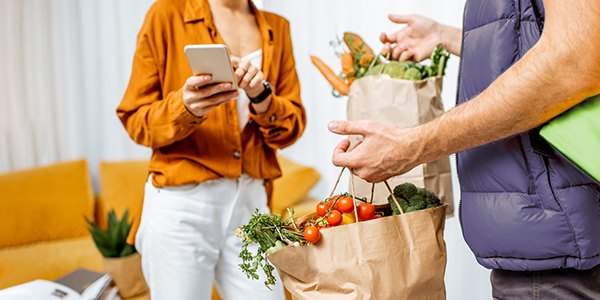This post is sponsored by Acosta.
Online grocery spending is expected to triple by 2023 to $74 billion, according to research from Acosta. Convenience is the key driver of online grocery sales, and demand is expected to push even higher as more digital natives reach adulthood and expect digital grocery services. Almost one-third (30%) of people already doing their grocery shopping online said they plan to increase it in the future, particularly consumers who only rarely take advantage of the opportunity now.
This growing focus on online ordering is prompting grocery retailers to begin offering or expand their capabilities for buying online with delivery or click-and-collect options. Making the most of online grocery will require retailers to change and improve some aspects of their marketing and merchandising, but those that succeed can boost their business by reaching more shoppers and increasing sales.
Improving online and mobile shopping improves customer loyalty, which is key in the competitive grocery sector. It also boosts competitiveness and performance, creating opportunities for retailers to:
- Broaden reach and exposure. A blend of traditional advertising, in-store messaging and digital marketing tactics can help retailers attract new customers and hold onto existing ones. This marketing mix boosts brand awareness, increases loyalty and highlights new products and promotions. To maximize their reach, retailers should use social media and search optimization strategies to push traffic to their sites and promote private-label products. Ensuring that store websites are intuitive and easy to use is imperative to making sure shoppers complete their transaction and return to shop again.
- Target specific shoppers. Families with kids use online grocery shopping the most, with 44% accessing it at least weekly. The service also is particularly appealing to older customers and those with limited mobility. Promoting the benefits of this service to these customers can increase retailers’ share of their weekly spending. Budget-conscious shoppers are another group that retailers can target with online ordering capabilities — specifically those with functionality that helps them track what they spend with each trip and over time. Acosta data show 37% of online shoppers rate this capability as “extremely important.”
- Motivate impulse buys. “Aisle shopping” in-store encourages impulse buys, but cracking the impulse buy code online can be a bit trickier. Almost all in-person shoppers (95%) buy something that’s not on their list, versus 67% of online shoppers, according to Acosta data. To encourage online shoppers to add more to their carts, retailers can create bundles of related products with a “buy now” button, or run ads on their app or website. Suggesting items that complement products already in shoppers’ baskets or on their frequently purchased lists, as well as serving up suggestions from other shoppers, can also drive impulse buys.
Taking advantage of these opportunities requires the right mix of strategy and technology. Learn more by downloading Unlocking the Potential of Online Grocery, which takes a closer look at what’s driving the growth of online grocery shopping and offers a checklist to help retailers succeed.
____________________________________________
If you enjoyed this article, sign up for FMI dailyLead to get news like this in your inbox, or check out all of SmartBrief’s food and travel newsletters, as we offer more than 30 newsletters covering the food and travel industries from restaurants, food retail and food manufacturing to business travel, the airline and hotel industries and gaming.
